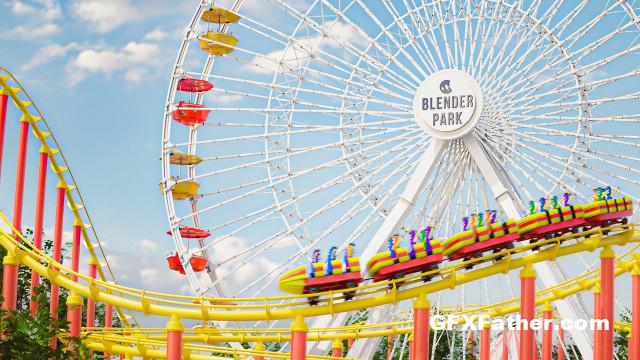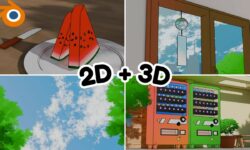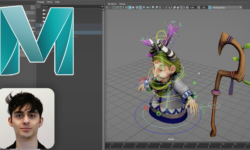ASSEMBLE – Introduction to Procedural Modeling with Geometry Nodes in Blender
Release date:2022, December
Author:Jonathan Lampel
Skill level:Beginner
Language:English
Exercise files:Yes
Geometry Nodes is a powerful way to create and modify 3d objects. Since this method of modeling is completely new to Blender, both beginners and experts alike will have to learn the fundamentals of this new system from scratch. You do not need to be a Blender pro or a math whiz to learn Geometry Nodes!
In Assemble, CG Cookie instructor Jonathan Lampel will guide you through the learning curve one step at a time so that you can begin to create your own geometry effects. The course is focused on the #1 practical use case for Geometry Nodes, which is piecing together modular assets to create models with adjustable and animatable properties, but the concepts that are taught are foundational to any Geometry Nodes project.
The course is intermediate level, and it’s expected that you are comfortable with the Blender interface, understand the basics of 3d modeling, and are familiar with shading nodes.
CHAPTER 1
The Basics of Geometry Nodes
We’ll start with the basics of Geometry Nodes such as how it fits into the modifier stack, what the colors and shapes of the node sockets mean, what attributes are & how to use them, and how to know if you should model something by hand or with nodes.
CHAPTER 2
Generating a Ferris Wheel
You’ll learn about the most essential nodes, and create a few node groups that you can reuse in any project. The main concepts include instancing models, creating arrays of assets, generating new geometry, snapping pieces together, and optimizing the node graph for better performance.
CHAPTER 3
Generating a roller coaster track
You’ll make a roller coaster track that’s generated along a custom curve and a cart that reliably moves along the track at any speed. Along the way you’ll learn about aligning objects to curves, using conditional properties, raycasting, solving equations with nodes, and procedural animation.





 Channel
Channel






Can you Please Upload Erindale Courses?